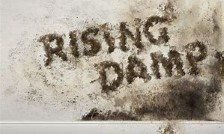Damp - What to look out for when assessing a property
Publish Date: 13 February 2018
By Beth Fox

Further reading
Looking for signs of damp when buying a property
When viewing properties it’s important to be on the lookout for signs of damp, as spotting this before you commit to buying could save you from making a very expensive mistake. Battling with damp in a property is something many of us face and it can end up being costly if it’s not dealt with quickly and appropriately.
There are three main types of damp that can affect your home: condensation, rising damp and penetrating damp. Identifying the specific type of damp is important as they all require different forms of treatment and the costs can vary substantially!
This is the most common form of damp and is more of a problem in older homes as newer homes are designed to allow moisture to escape. It’s a result of moist air condensing on walls and mainly occurs in winter as at this time the walls are much colder than the air inside. Poor ventilation, particularly in bathrooms and kitchens, and heating that goes on and off can exacerbate condensation as it condenses warm, damp air. Condensation can be spotted relatively easily by looking out for patches of dark mold on glass or around windows, damaged plaster, decaying window frames, wet patches on walls and water droplets on windows.
Rising damp:
This is caused by ground water moving up through a wall or floor. Water is usually stopped by a damp-proof course built into the wall 15cm (6 inches) above ground level; however, older houses may not have had a damp-proof course or it may have worn over time, causing it to be ineffective. Ineffectual drainage or a ground level outside higher than the damp-proof course can also lead to rising damp. Damaged skirting boards or plasterwork, peeling paint and wallpaper, or a white tide mark running along the wall can signify rising damp.
This is a result of structural problems leading to water leaking through walls or roofs. The damp expands horizontally along walls or ceilings and is more likely to occur in older houses with solid walls, as cavity walls in newer homes stop water soaking through. Penetrating damp can be spotted by damp patches and water marks on walls and ceilings and these patches may darken or drip when it rains.
Viewing a property
A damp proof course is installed at least 150mm above ground level to prevent damp rising into a building. It is therefore important to check flower beds and driveways have not been fitted at a higher level than the damp proof course as this could result in a serious damp problem.
You need access to www.eigpropertyauctions.co.uk, the only site with information on virtually every lot coming to auction. Get access to industry knowledge with full visibility of what is coming up for sale and what similar properties have sold for.
Try it for free, call us now to experience your no obligation trial: 01737 226150
Essential Information Group - News and Information
Keep up to date with our latest news, case studies and what's going on in the property auction industry on our blog.

Buying at auction
20/03/2025
Why the Property Auction Market is Booming Due to Stamp Duty Changes
The UK property auction market is experiencing a surge in activity in March 2025, driven primarily by impending changes to stamp duty regulations

Buying at auction
27/02/2025
Who Can Benefit from Buying a Property at a UK Property Auction?
Buying a property at a UK property auction can be advantageous for various buyers depending on their financial situation and goals. Auctions often offer unique opportunities, discounted properties, and a fast purchase process. Here’s who can benefit the most.

Buying at auction
24/02/2025
Bridging Loans Explained: A Guide for Property Auction Buyers
A bridging loan is a short-term financing solution, typically lasting up to 12 months. It provides immediate funds to bridge the gap between purchasing a property and securing long-term financing.